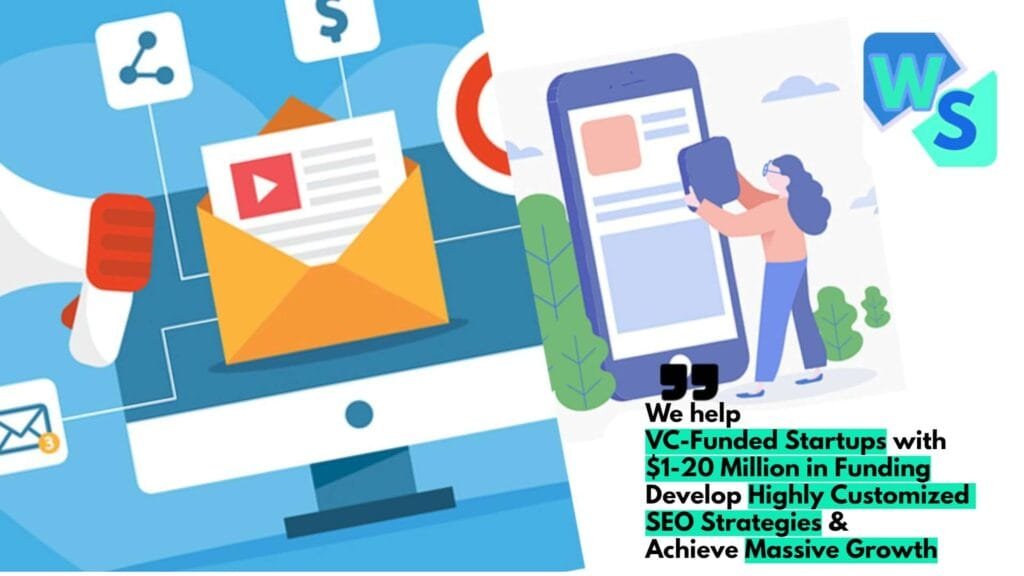Webinars are a must-have marketing strategy for any and all businesses in all industries over the world. They offer a unique combination of accessibility, personalization, and convenience, allowing businesses to share their knowledge, showcase their expertise, and connect with their audience on a deeper level in the digital space.
The result?
A powerful marketing tool that builds trust, generates leads, and drives sales.
What to expect in the article
In the following sections, we’ll delve into the world of webinars, demystify its concept, explore its types, and highlight its powerful role in digital marketing. We’ll investigate how webinars can significantly impact your marketing strategy, from improving brand awareness to nurturing leads and retaining customers.
We’ll also guide you through creating your first webinar, share best practices for hosting effective webinars, explore advanced webinar formats, and show you how to integrate webinars seamlessly into your overall marketing strategy. Lastly, we’ll learn how to measure the success of your webinars and use this information to continually improve and optimize your efforts.
Understanding Webinars
Webinars typically feature audio and visual components, including slideshows, live or pre-recorded video presentations, and interactive elements such as polls and chats. The main objective of a webinar can vary, ranging from educating the audience about a specific topic, demonstrating a product, offering professional advice, to simply sharing ideas and sparking discussions.
Different types of webinars (educational, product demos, Q&A, interviews, etc.)
Webinars come in various shapes and sizes, each serving a unique purpose. Let’s unpack some of the most common types.
Educational webinars, often referred to as training or instructional webinars, are primarily designed to inform the audience about a specific topic. For instance, a tech company might host an educational webinar to teach users how to use their new software.
Product demos are webinars where businesses showcase how their product works, highlight its features and benefits, and show real-world applications. These are particularly effective in the tech industry, where showing the software in action can be far more impactful than mere descriptions.
Q&A webinars give the audience an opportunity to ask questions, fostering engagement and allowing the host to address specific concerns or queries. Interviews, on the other hand, feature a discussion with an expert or influencer in the field, offering insights, advice, and professional opinions.
Why webinars are a powerful tool in digital marketing
Webinars are more than just online seminars; they are a compelling tool in the digital marketing toolbox. They have the unique ability to engage audiences in a highly interactive and personal way. A well-executed webinar can foster trust and credibility, positioning your brand as an industry expert. It’s an opportunity to showcase your knowledge, provide value to your audience, and establish a direct communication channel with them.
Webinars are also effective in generating high-quality leads. Participants who sign up for webinars show a higher level of interest and engagement in your topic or product, making them potential customers.
Lastly, webinars offer rich content that can be repurposed in various forms—blog posts, social media snippets, e-books, and more, extending their value beyond the live event.
The Impact of Webinars on Your Marketing Strategy
#1. How webinars can improve brand awareness
Webinars are a potent tool for boosting brand awareness. By delivering a wealth of valuable information on a subject relevant to your target audience, you establish your brand as a knowledgeable authority in that field.
The more webinars you host on a variety of topics, the broader your reach becomes, exposing your brand to new audiences. Furthermore, attendees who found your webinar beneficial are likely to share it within their networks, amplifying your reach even more.
#2. The role of webinars in lead generation
In the realm of digital marketing, lead generation is king—and webinars are one of the most effective strategies to generate quality leads. The mere act of registering for a webinar indicates a person’s interest in your topic, and by extension, your brand.
Furthermore, the detailed information registrants provide during the signup process gives you insights into your audience, which you can use for future marketing endeavors.
Remember, these are individuals who have willingly given their time and attention to hear what you have to say—making them warm leads ready for further nurturing.
Related Reads:
#3. Webinars’ contribution to customer education and retention
Webinars serve as an excellent platform for customer education. By hosting webinars focused on teaching your audience how to get the most out of your product or service, you add value to their experience and increase the likelihood of them becoming repeat customers.
Moreover, educating your customers helps them solve their challenges more efficiently, leading to increased customer satisfaction. Over time, satisfied customers can turn into loyal advocates for your brand, sharing their positive experiences with others and helping to attract new customers.
#4. Case studies of successful marketing strategies using webinars
Let’s look at a few examples of brands that have effectively utilized webinars in their marketing strategy.
HubSpot, a leading CRM platform, often conducts free educational webinars on various aspects of digital marketing. These webinars have helped them position themselves as thought leaders in the industry, attracting thousands of attendees, and generating high-quality leads.
Similarly, Zoho, a SaaS company, has seen considerable success with their product demo webinars. By showcasing the capabilities of their software in a live setting, they’ve been able to attract potential customers, address their queries in real-time, and drive sales.
Thus, it’s clear that regardless of your industry, webinars can play a significant role in enhancing your marketing strategy.
Related Reads:
- Marketing 7Ps: All You Need to Know
- Branded Content Marketing: What is it all about?
- The 3Ps in Marketing
- How to Recognize and Avoid Marketing Myopia
- The 7 Marketing Functions Your Business Must Incorporate
- How to Develop a Rock-Solid Business Strategy
How Webinars Help in Lead Generation and Lead Nurturing
In the digital marketing landscape, lead generation is the process of attracting and converting strangers into someone who has shown interest in your company’s product or service. It’s the first step in building a relationship with potential customers. But generating leads is just the beginning.
Once leads are generated, they need to be nurtured down the sales funnel until they are ready to make a purchase. This nurturing process often involves providing valuable content, following up with relevant offers, and engaging leads at various stages of the buyer’s journey. It’s during this stage that webinars prove to be a valuable asset.
Strategies for using webinars for lead generation
Webinars provide a unique opportunity to generate leads because they offer something of immediate value—education, insights, or solutions—to potential customers. Here are a few strategies to maximize lead generation through webinars:
- Promotion: Promote your webinar across multiple channels like email, social media, and your company’s blog to reach a larger audience. Remember, the broader your reach, the more leads you can generate.
- Registration: Use a signup form that captures necessary information from attendees, like their name, email, and job role. This data can later be used for personalized follow-up communications.
- Partnerships: Partner with another company in your industry to co-host a webinar. This approach can help both companies extend their reach and generate more leads.
Techniques to nurture leads through webinars
Webinars are a powerful tool for nurturing leads, too. They allow you to interact with your audience in a more personal way than most other forms of content marketing. Here’s how you can nurture leads using webinars:
- Educate: Create educational webinars that help attendees solve a problem or learn a new skill. These webinars position your brand as a helpful resource and keep your leads engaged with your content.
- Demonstrate Value: Show how your product or service can be a solution to the problems discussed during the webinar. Real-time demos can be particularly effective.
- Follow-Up: After the webinar, send a follow-up email to all registrants (attendees and those who missed it). The email could include a link to the webinar recording, additional resources on the topic, and a call to action relevant to your sales funnel.
Real-life examples of successful lead generation and nurturing through webinars
A shining example of a company leveraging webinars for lead generation and nurturing is Adobe. They conduct regular webinars on a range of topics from creative design to document management. The webinars are promoted via email and social media, helping Adobe reach a vast audience.
By delivering highly engaging and informative content, Adobe not only generates leads but also nurtures them by demonstrating the capabilities of their software, all while establishing themselves as a thought leader in their field.
Thus, webinars can play a crucial role in your lead generation and nurturing efforts, giving a significant boost to your marketing strategy.
Creating Your First Webinar: A Step-by-Step Guide
#1. Defining the goal of your webinar
The first step in creating a webinar is defining its purpose. Are you looking to generate new leads, educate your existing customer base, or establish your company as a thought leader in the industry? This objective will guide the rest of your decisions— from the topic you choose to the way you promote the webinar.
#2. Choosing a topic and format that suits your target audience
Once you’ve set a goal for your webinar, it’s time to select a topic that will draw your target audience. This requires understanding your audience’s needs, interests, and challenges.
For example, if your goal is to generate leads among small business owners, you might host a webinar on “Effective Strategies for Small Business Growth”. If you aim to nurture existing leads in the software industry, you could conduct a webinar titled “Exploring the Future of Software Development: Trends to Watch in 2023”.
The format of your webinar should also be suited to your audience. Formats can range from a single speaker presentation, a moderated panel discussion, a Q&A session, or even a product demo. Choose a format that best serves your topic and engages your audience.
#3. Selecting the right webinar tools and software
Your choice of webinar platform can make a significant difference in the webinar experience for both you and your attendees. Some popular webinar tools include GoToWebinar, Zoom, Webex, and Demio. These platforms offer features like screen sharing, live chat, recording options, and analytics, among others.
When choosing a webinar platform, consider factors like ease of use, cost, technical support, and the specific features you need for your webinar.
Here’s an in-depth guide comparing the top 17+ webinar software.
#4. Tips on preparing content for your webinar
Preparing engaging content is crucial to the success of your webinar. Here are some tips:
- Outline Your Content: Start with an outline of your presentation. This will help you structure your content logically and ensure you cover all key points.
- Make it Interactive: Plan for audience participation. This could include polls, quizzes, or Q&A sessions. Interactivity keeps the audience engaged and makes the webinar more memorable.
- Use Visuals: A good presentation is visually appealing. Use images, infographics, and slides to break up text and illustrate concepts.
#5. Promoting your webinar for maximum reach
Promotion is key to attracting attendees to your webinar. Utilize various channels such as social media, email marketing, and even paid advertising if necessary. You can also create a dedicated landing page on your website with the webinar details and registration form.
Starting promotion at least two weeks in advance is typically a good rule of thumb. Remember, the success of your webinar depends heavily on how well and how much you promote it.
Best Practices for Hosting an Effective Webinar
#1. Engaging your audience during the webinar
Keeping your audience engaged throughout your webinar is crucial for its success. This is what turns a good webinar into a great one. Start by setting the tone right from the beginning. Welcome attendees as they join, introduce the speakers and give a quick overview of what they can expect from the webinar. This not only makes the audience feel valued but also sets the stage for the session.
Next, keep your presentation dynamic. This can be achieved by varying the tone and pace of your speech, using visual aids effectively, and involving the audience through interactive elements like polls, quizzes, and live chats. Encourage the audience to ask questions throughout the webinar rather than waiting till the end. This creates a more conversational and engaging experience.
#2. Incorporating Q&A and interactive elements
One of the most interactive elements of a webinar is the Q&A session. This provides a platform for the audience to engage with the speakers and get their questions answered in real time. Make sure to allocate enough time for Q&A in your webinar agenda.
Interactive elements like polls and quizzes can also increase engagement. They can be used to gather real-time feedback, gauge the audience’s understanding of the presented content, or simply break the monotony and add a fun element to the webinar.
#3. Technical aspects to consider for a smooth webinar
Ensuring that your webinar runs smoothly from a technical standpoint is crucial for a good attendee experience. Start by familiarizing yourself with the webinar platform and all its features. Run a few test webinars to iron out any technical glitches.
Make sure you have a stable internet connection and a quiet environment to host the webinar. Keep your audio and video quality in check. Using a good quality microphone and camera can significantly improve the overall quality of your webinar.
#4. Following up after the webinar
The webinar experience doesn’t end when the session concludes. A crucial part of hosting a successful webinar is following up with attendees. This could include sending them a recording of the webinar, the presentation slides, or any other resources that were mentioned during the webinar.
Follow-ups are also an opportunity to gather feedback about the webinar. Ask attendees what they liked about the webinar, what they didn’t, and what they’d like to see in future webinars. This feedback is invaluable in improving your future webinars.
Utilizing Webinars for Product Demonstrations and Launches
Webinars serve as an effective platform for showcasing products, primarily because they allow for real-time interaction and instant feedback. They provide an environment in which businesses can effectively demonstrate the use and benefits of a product, highlighting its features in a practical, tangible manner. Additionally, webinars allow companies to target a large, diverse audience base spanning different geographical locations.
Webinars also allow the audience to see the product in action. By offering live demonstrations, businesses can effectively address any queries or concerns, helping to remove any barriers to purchase. Moreover, attendees get a chance to see the direct applicability and value of the product, which can be a powerful driver of sales.
Tips for a successful product demo or launch webinar
Planning is key for a successful product demonstration or launch webinar. Begin by identifying your target audience and tailoring the webinar’s content to suit their interests and needs. Set clear objectives for the webinar, whether that’s to raise awareness, generate leads, or drive sales.
When demonstrating the product, focus on the problems it can solve for the viewer. People are more interested in solutions than features, so position your product as a tool that can improve their lives or work.
Consider offering a special promotion or discount for those who attended the webinar. This adds value to their attendance and can incentivize immediate purchases.
Remember to leave ample time for a Q&A session. This is your opportunity to address any doubts or objections that potential customers may have.
Case study of effective product demo webinars
Similarly, Tesla has effectively used webinars for product launches. For instance, during the unveiling of the Model 3, Elon Musk not only discussed the car’s unique features but also addressed questions about Tesla’s vision, production capacity, and future plans. The live stream event generated significant viewer engagement and resulted in a surge of pre-orders for the vehicle.
Exploring Advanced Webinar Formats
Webinars aren’t confined to solo presentations; they can also include panel discussions, interviews, and fireside chats, among other formats. Such diverse webinar formats provide your audience with a dynamic and engaging experience, and they offer different ways to convey information, share insights, and interact with attendees.
A panel discussion, for example, includes multiple experts in a field who can offer a variety of perspectives on a specific topic. This type of webinar is beneficial for tackling complex or multifaceted issues and can provide viewers with a wealth of knowledge and differing viewpoints.
Interview-style webinars, on the other hand, involve a host asking questions of a guest or guests. This format can bring in industry experts or influencers, whose name recognition can attract a larger audience. Furthermore, the Q&A style of an interview can make the information more digestible and engaging for viewers.
How to choose the right format for your goals
The right format for your webinar depends on your objectives, topic, and audience. If your goal is to educate your audience about a complex issue or to provide multiple viewpoints on a topic, a panel discussion could be suitable. If you’re launching a product or providing a company update, a single speaker or interview format may work best.
To choose the right format, you should also consider your audience’s preferences. Some audiences may prefer the interactive nature of a panel discussion, while others might appreciate the focus and depth of a single-speaker presentation. Surveys, social listening, and audience engagement metrics from previous webinars can provide valuable insights into your audience’s preferences.
Tips for executing these formats effectively
Regardless of the format you choose, planning and preparation are crucial. If you’re hosting a panel discussion, ensure that the panelists have clear guidelines on the topics to discuss and keep a balance in speaking time. For interview-style webinars, prepare your questions in advance and share them with your guest. However, be ready to adapt the conversation based on their responses and audience questions.
Technical preparation is also essential. Ensure your guests have a stable internet connection, good quality microphones, and are comfortable with the webinar platform. Rehearse with them beforehand to reduce the chance of technical glitches on the day.
With these advanced webinar formats, you can offer your audience a more engaging and enriching experience.
But, how do you know if your webinars are successful?
Measuring the Success of Your Webinar

#1. Key performance indicators (KPIs) to track
Webinar success isn’t just about hosting an event without technical hiccups. The real success lies in achieving your objectives, be it boosting brand awareness, generating leads, or educating your audience. But how do you quantify success? You do it by tracking the right Key Performance Indicators (KPIs).
Typically, the KPIs for webinars include registration numbers, attendance rate, attendee engagement, and lead conversion rate. The registration numbers can give you an insight into the appeal of your topic and the effectiveness of your promotional efforts.
The attendance rate, the percentage of registrants who attended the webinar, indicates the persuasiveness of your reminder process and the overall interest in your webinar. High registration numbers but low attendance rates could signal that something is going wrong between registration and the event itself.
Next, attendee engagement measures how interactive your audience was during the webinar. This could be tracked by counting the number of questions asked, comments made, polls answered, or social media mentions during and after the webinar.
Finally, the lead conversion rate indicates how many attendees took the desired action after the webinar, such as making a purchase, signing up for a trial, or downloading a resource. This is a critical indicator of the webinar’s success in driving business goals.
Related Reads:
- 29+ Best Digital Analytics Software Compared!
- 11 Marketing Analytics Tools to Elevate Your Data-Driven Strategies
- Top 9 Data Virtualization Tools: Which one is right for you?
- Best Business Intelligence Software: Pick the right one for your needs!
#2. Using feedback and analytics for improvement
Feedback from attendees is an invaluable resource for improving your future webinars. Post-webinar surveys can help you understand what your audience liked about the webinar, what they thought was missing, and what they’d like to see in future webinars.
Webinar platforms often come with analytics tools that provide a wealth of data about your event. This can include the average watch time, the drop-off points in the webinar, the most engaged sections, and much more. By analyzing this data, you can identify areas of strength and potential weaknesses in your webinar strategy.
#3. Conversion optimization strategies post-webinar
Post-webinar conversion optimization strategies can help you maximize the ROI of your event. This could include sending a follow-up email with the webinar recording and additional resources, or offering a limited-time discount or bonus to webinar attendees.
You could also segment your attendees based on their engagement levels during the webinar and send them personalized messages. For example, highly engaged attendees could receive an offer for a free consultation or a premium resource, while less engaged attendees might receive a blog post related to the webinar topic.
All these measurements and strategies are part of an ongoing process to continuously improve your webinars and drive better results.
Related Reads:
- A/B Testing: An Explainer
- Multivariate Testing: Why is it used for Boosting CRO
- Usability Testing and Conversion Rate Optimization: The Relation
- 51+ CRO Tools for All Your Lead Generation and Conversion Needs!
Integrating Webinars into Your Overall Marketing Strategy
#1. Aligning your webinars with your content marketing strategy
Webinars shouldn’t exist in a vacuum; instead, they should align with and complement your content marketing strategy. This means that the topics you cover, the tone you use, and the value you deliver should be consistent with your other content marketing efforts.
For instance, if your content marketing strategy involves educating customers about industry trends, your webinars could dive deep into these trends, offering insights that are not fully covered in your blog posts or white papers.
Similarly, if your blog post about a specific topic receives an unusually high level of engagement, that’s a signal that your audience is interested in that subject, and it could be a great idea for a webinar.
#2. Utilizing webinars for email marketing
Email marketing and webinars go hand in hand. Email is one of the most effective channels to promote your upcoming webinars and engage with your audience post-webinar.
But the utility of email goes beyond webinar promotion. For instance, when a person registers for your webinar, you gain a valuable email address that you can nurture with personalized content over time.
Moreover, webinars can serve as a rich source of content for your email newsletters. The recorded webinars, key takeaways, Q&A sections, and related resources can all be repurposed into engaging email content.
#3. Leveraging social media for webinar promotion and engagement
Social media platforms offer multiple opportunities to promote your webinars, engage with your audience, and extend the life of your webinar content.
Platforms like LinkedIn, Twitter, and Facebook allow you to advertise your webinar to a broader audience. You can create event pages, start discussions, and even run paid ads to attract more registrants.
During the webinar, you can encourage attendees to share their thoughts and key takeaways on social media, extending the conversation beyond the webinar platform.
After the event, you can share the recording, snippets, quotes, and insights from the webinar across your social channels, continuing to provide value and engaging with those who might have missed the live event.
Related Read: 31+ Top Social Media Management tools Compared! (2023)
Wrapping it up
We’ve navigated the intricacies of webinars in this guide – understanding their different types, discerning the significant impact they have on your marketing strategy, and the pivotal role they play in lead generation and nurturing. We’ve given you a roadmap to hosting your first webinar and shared some best practices to ensure your webinars are effective and engaging.
Remember, the beauty of webinars lies in their flexibility and adaptability. You have the freedom to mold them to your unique brand voice and objectives.
Need any help with this? Send us an email at adhip[at]winsavvy.com or book a meeting for free here and we will show you how we do it.





















